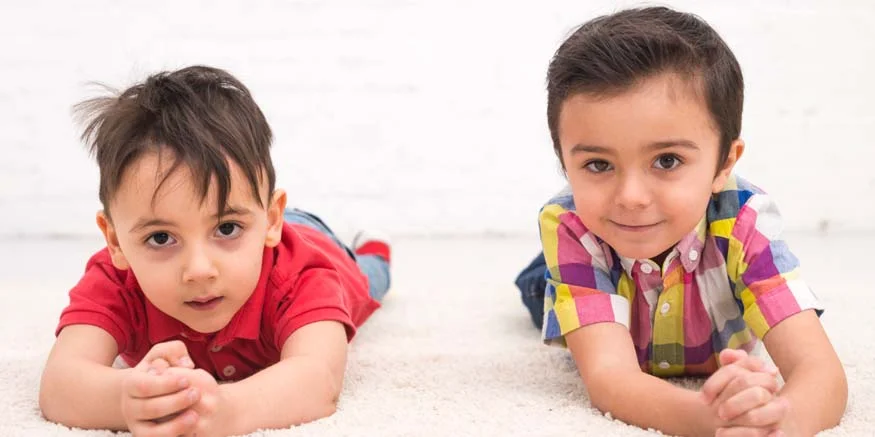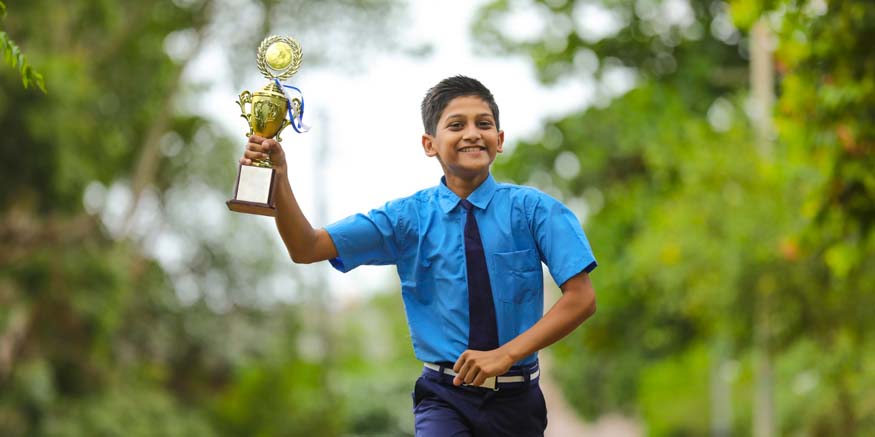A question that frequently arises among parents and healthcare professionals is whether twins reach developmental milestones simultaneously. The exploration of this phenomenon is crucial, as it carries significant implications for parental expectations, early intervention programs, and individualised care for twins.
In this blog, we delve into the current understanding of twin development, with a particular focus on the synchronisation of developmental milestones.
Also Read: Top Developmental Milestones That Every Child Should Reach
Understanding Developmental Milestones
Developmental milestones are behavioural or physical checkpoints seen in infants and children as they grow and develop. These milestones encompass a wide range of skills and behaviours, including motor skills, language development, cognitive prowess, and social-emotional growth.
From birth to 12 months, babies undergo rapid growth. By the first month, babies typically begin to fixate on faces and respond to sounds. Between three to six months, infants usually start to roll over, babble, and show curiosity about their surroundings. As they approach their first year, many babies can often sit without support, respond to simple verbal requests, and may even start to walk.
These milestones serve as guidelines rather than rigid deadlines. It is also important to recognise that each child develops at their own pace, and some may reach milestones earlier or later.
Twins, whether fraternal or identical, may reach these milestones at different rates. Factors influencing their development include genetic composition, interaction within their shared environment, and individual health issues.
Research suggests that twins, especially those who are premature, might achieve milestones like sitting up, crawling, and walking later than single-born children. This delay is generally modest and within normal developmental timelines. Parents and healthcare providers should monitor twin development carefully, but avoid making direct comparisons between twins or with single children, as each child is unique.
Twins often create their way of communicating, known as ‘twin talk’ or ‘cryptophasia’, which might cause a small delay in language development. Yet, this delay usually does not lead to lasting problems. Encouraging individual interactions and experiences can promote healthy developmental progress in twins.
Also Read: What is the development of a child in preschool?
Synchronisation of Milestones in Twins
Some studies have indicated that twins, particularly identical ones, may indeed reach certain developmental milestones like smiling, crawling, and walking in a more synchronised manner compared to fraternal twins or singleton peers. This suggests a genetic influence on developmental timelines.
The variance in development can be attributed to various factors. For instance, twins often experience shared environmental conditions, which can lead to similarities in the timing of developmental achievements. Conversely, individual experiences, illnesses, or varying levels of parental interaction with each twin can result in differences.
Birth Weight and Gestational Age
Birth weight and gestational age are critical factors to consider. Twins are more likely to be born with lower birth weights and before full term, factors known to affect development. Premature birth and associated complications can delay the onset of certain developmental milestones. Although twins may face these circumstances together, their responses to them can differ, leading to a disparity in achieving milestones.
Also Read: What is the Role of School in Child Development?
Early Intervention and Personalised Care
Understanding that twins may develop at different rates is essential for providing adequate support and intervention when necessary. The “wait and see” approach often advised for singleton development may not be appropriate for twins.
Instead, early intervention services can be crucial for twins who exhibit delays, ensuring that each child’s unique needs are addressed.
Parental Expectations and Twin Individuality
Parents of twins should be cautioned against direct comparisons of their children’s developmental rates. Not only can this bring unnecessary anxiety, but it can also overshadow the unique growth and development of each twin as an individual. Despite their shared genetic or uterine environment, twins retain their distinct developmental journeys.
While twins may exhibit some synchronisation in reaching developmental milestones, particularly identical twins, a myriad of factors can contribute to variations in their developmental trajectories. Genetics, environmental conditions, birth weight, gestational age, and personal experiences all interweave to shape the individual development of each twin.
Also Read: The Importance of a Good School Environment for Creative Development
Addressing Developmental Delays in Twins: Strategic Approaches for Parents
Parents of twins might worry when they see one child hitting developmental milestones later than the other. Though it is common for twins to have different developmental speeds, knowing when and how to step in is important for your children’s welfare.
- Careful observation and documentation: Record when each twin reaches milestones and note the differences. This information is valuable when discussing your concerns with a paediatrician. Early intervention is key, so do not hesitate to seek medical advice if you suspect that developmental delays are beyond normal variations.
- Professional evaluations: These evaluations typically involve physical exams, developmental screenings, and possibly referrals to specialists. If one twin has a developmental delay, an individualised intervention plan can be crafted, often involving physical therapy, occupational therapy, or speech therapy, depending on the child’s needs.
- Stimulating and engaging both children: This might involve activities that promote motor skills, language development, and social interaction. Ensure a supportive and nurturing home environment that encourages both children to progress at their own pace.
- Adopting an individualised yet inclusive approach: Take an approach that caters to both twins. Even though they share a close bond, each twin is an individual with a distinct developmental timeline. Reaffirming this individuality can alleviate undue pressure or comparison.
- Seek Support: Parents must also seek support for themselves. Connecting with other local parenting groups, and twins’ clubs, and going through twins-focused research studies, can provide valuable insights and emotional backing. For families expecting twins or navigating the early years of twin development, a wealth of resources is available to support them.
Paediatricians and twin-specific developmental specialists can also provide individualised guidance for each twin’s growth and milestones.
To answer the original question: twins do not always reach developmental milestones at the same time. There is a significant variation even among identical twins, and most certainly among fraternal twins, making it apparent that each child’s development is unique. Twins, like all children, should be viewed as individuals, with milestones assessed independently to ensure the best outcomes for their growth and well-being. It is paramount that healthcare providers assess twins on an individual basis, taking into account their specific birth context and growth patterns. A watchful eye on their milestones, coupled with supportive interventions, when necessary, can facilitate positive developmental outcomes for both twins.
For more such informative blogs, Visit EuroSchool!









